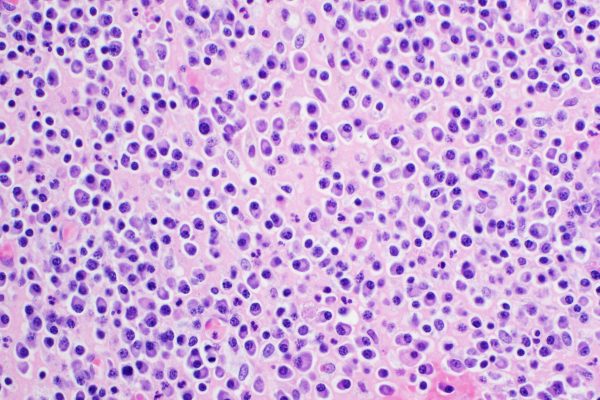
Results from the recent phase III IKEMA study of carfilzomib and dexamethasone (Kd), combined with isatuximab in patients with multiple myeloma (MM), demonstrate a clear survival benefit with this triplet regimen. Previous findings from other trials, such as the phase III ICARIA-MM study, which investigated isatuximab, dexamethasone and pomalidomide, eluded to the success of a triplet approach for patients with relapsed/refractory (r/r) MM. Study co-author Philippe Moreau, MD, of the University Hospital Hotel-Dieu, Nantes, France went so far as to say that this triplet regiment has potential to be “a new standard of care” for r/r MM patients.
This international phase III trial randomised 302 r/r MM patients, who had progressed on 1-3 prior lines of therapy to receive isatuximab plys Kd (N= 179), or Kd alone (N= 123). Patients who were assigned to the triplet combination received isatuximab intravenously at a dose of 10 mg/kg per week for the first four weeks, and then every two weeks thereafter. Treatment was continued until disease progression or unacceptable toxicity. The primary endpoint of this study was progression-free survival (PFS), with a key secondary endpoint of safety.
Baseline characteristics were well balanced between the two cohorts, with a median study age of 64 years. Enrolled patients had also received a median of two prior lines of therapy. Approximately 44% of these patients had just one prior line of therapy, whilst 33% and 23% had received two and three prior lines of therapy, respectively. The median duration of treatment was 80 weeks with the triplet combination, and 61.4 weeks with Kd alone, with both cohorts receiving a comparable dose intensity of Kd throughout the study period. The median PFS was not reached (NR) with the triplet combination in this study, compared to 19.15 months ([95%CI]: 15.77-NR) with Kd alone (HR[99%CI]: 0.53[0.32-0.89], P= 0.0007). The estimated two-year PFS was 68.9% for the triplet combination, and 45.7% for Kd alone (HR[99%CI]: 0.58[0.36-0.92], P= 0.0010). Encouragingly, the overall response rate (ORR) was high in both patient cohorts, although it was higher in those who received the triplet combination (87% vs. 83%, P= 0.19). Additionally, significantly more patients who received the triplet combination experienced a very good partial response or better, compared to Kd alone (73% vs. 56%, P= 0.0011). Finally, the rate of patients who developed a complete response was greater with the triplet combination compared to Kd alone (40% vs. 28%), translating to a significantly higher proportion of combination patients attaining measurable residual disease negativity, compared to those who received Kd alone (30% vs. 13%, P= 0.0004).
Grade ≥3 treatment-emergent adverse events (TEAEs) were higher with the combination compared to Kd alone, occurring at rates of 77% and 67%, respectively. However, serious TEAEs were comparable between the two groups, although numerically higher with the triplet combination, at 59% and 57%. However, TEAEs resulting in treatment discontinuation occurred at a lower rate with the isatuximab combination, at a rate of 8%, compared to 14% with Kd alone. Additionally, around 3% of patients in each group experienced fatal TEAEs.
These results offer compelling evidence for the efficacy of a triplet regimen of isatuximab, carfilzomib and dexamethasone. With a manageable safety profile, this could indeed become a new standard of care for r/r MM patients who have progressed on at least one line of therapy.
Moreau P, Dimopoulos MA, Mikhael J et al., Isatuximab, carfilzomib, and dexamethasone in relapsed multiple myeloma (IKEMA): a multicentre, open-label, randomised phase 3 trial. Lancet. 2021; 397(10292): 2361-2371.